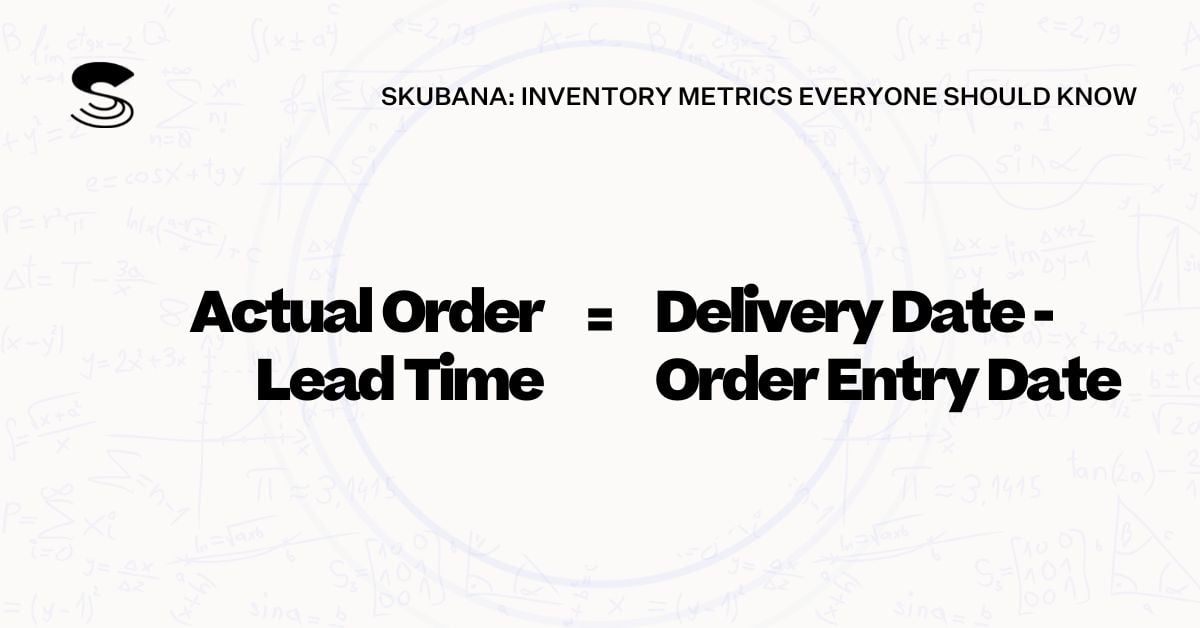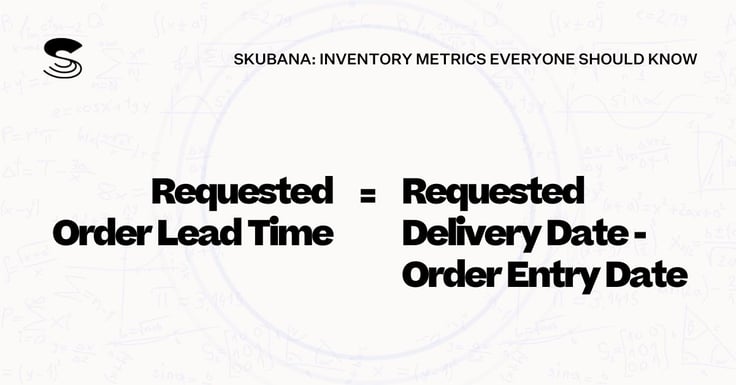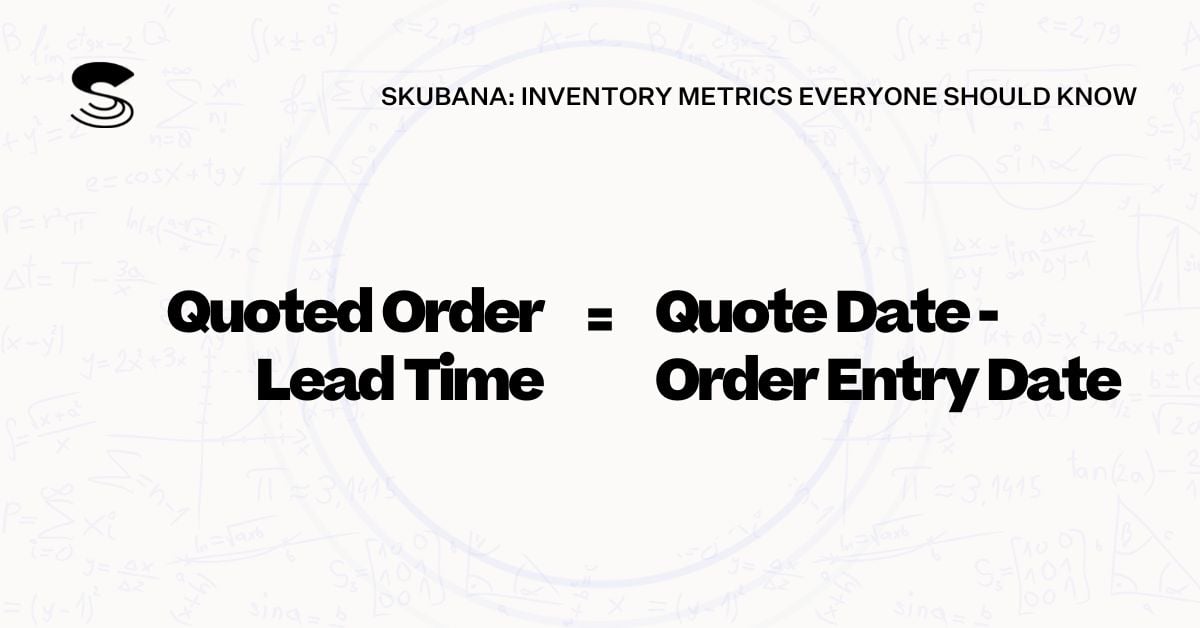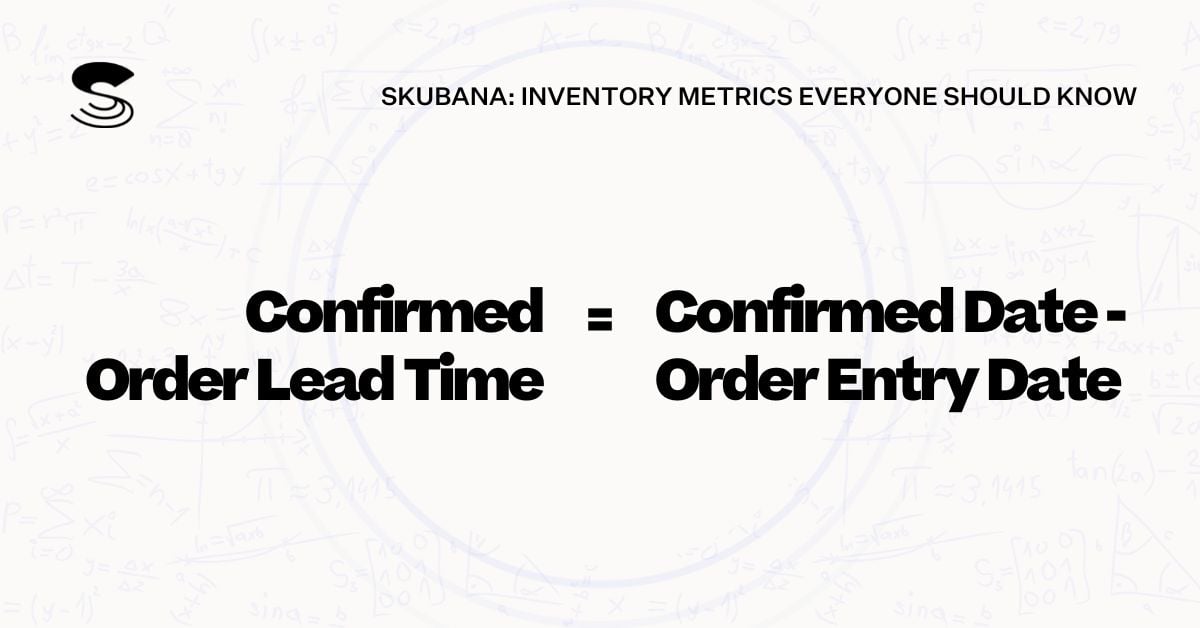Modern consumers have increasingly high expectations, which includes short delivery windows and outstanding customer service. But what exactly does this mean for your ecommerce company? As your business is managing its inventory to meet customer demand(s), you’ll need to hone in on your purchase order lead time (POLT) if you want to weed out shipping delays and fulfill your orders with more ease and accuracy.
Read on to learn all about the ins and outs of purchase order lead times, as well as how to calculate (and improve) these metrics for your own ecommerce brand.
What is order lead time?
Order lead time measures how long it takes for a vendor or retailer to fulfill customer orders. In other words, order lead time is the number of days from when an order is placed until fulfillment is finalized and delivery is complete. Lead times can vary greatly from industry to industry, and are directly impacted by the types of goods (or raw materials) being ordered, where suppliers are located, and the time of year these items are requested.
How does order lead time work?

As outlined above, order lead time looks at the amount of time between order placement and the date of receipt. Say for example, that your online store places an order with your supplier on June 1st, and the anticipated delivery date is June 15th. In this scenario, your purchase order lead time comes out to two weeks/14 days.
Within this POLT, there are a number of different steps that have to occur: order placement, order confirmation, shipping notice, receipt of goods, invoicing, and payments. In addition, there must also be an availability of goods for the PO to be fulfilled accurately and on time.
Ecommerce retailers have a responsibility to carefully plan their manufacturing and production lead times. If production inputs arrive late, it’s going to create a bit of a snowball effect. Your manufacturing processes will then be delayed, which will wind up costing your company a lot of money due to lost sales, idle worker time, and so on. Alternatively, if production inputs are received too early, you might have to pay excess carrying costs to store all these items.
This is why it’s so important for business owners to have accurate lead time calculations and to plan as precisely as possible for when, what, and how much they need to reorder.
Factors that impact order lead time

Even when you do all the necessary preparations, there are still going to be external factors that can throw your lead times way of course. Some of the most common variables that are likely to affect lead times are seasonality, human errors, and unforeseen supply chain disruptions.
Seasonality
Seasonality describes the ebb and flow of customer demand at different times of the year. That is to say, seasonality represents the surges in demand retailers see during specific weeks or months each year. While many ecommerce sellers experience a peak from October to December, others may encounter an influx during the spring and summer months instead.
Regardless of when seasonality occurs, it’s going to impact your order lead times in a big way. That’s because when suppliers are flooded with tons of purchase orders all at once, it’ll take longer for them to get these orders out the door. To bring balance to this situation, it’s best to get your purchase orders in early (to stay ahead of your competitors), and to keep a healthy level of safety stock on hand (to combat potential delivery delays).
Human errors
If your brand relies on manual processes or calculations, then unfortunately, you’re leaving room for human errors and accounting inaccuracies to slip on in. In short, when you use static spreadsheets (or other paper documentation), it can lead to miscalculations on how much replenishment you need or when you need orders to arrive.
This is because you’re working with numbers that aren’t automatically updated — meaning they’re not an accurate reflection of what’s actually happening with your stock levels. Automations (particularly those via inventory management software) are an important addition to your lead time calculations. They provide 24/7, real-time data on product movement which can dramatically improve the accuracy of your order lead time calculations.
Supply chain disruptions
Like it or not, supply chain disruptions have quickly become the norm rather than the exception for modern ecommerce retailers. Over the last two years, brands from all over the world have been faced with a lack of raw materials, labor shortages, natural disasters, and breakdowns in transportation that have offset their order lead times more than ever before.
While some of these disruptions are nearly impossible to anticipate, they should still give you pause as you’re placing future orders with your suppliers. As suggested above, one of the best ways to counteract supply chain challenges is by giving vendors ample/extra time to fulfill your orders, and to maintain a healthy level of safety stock at your warehouse. This way, you can continue selling even when your shipments are experiencing notable delays.
Expectations for order lead times

The expectations you have for your lead times will largely depend on what you sell, how far in advance you place your orders, and where your suppliers are located. If you sell in a popular product category with a decent amount of competition (like skincare or fitness equipment, for example), then you might encounter longer lead times than a company who has a more niche product line. In addition, if you work with foreign suppliers or tend to submit your POs at the last minute, your delivery date will probably be a bit further out, as well.
Order lead times can vary from a few days, to weeks, to several months at a time. This all hinges on the accuracy of your calculations and whether you’re actively working to reduce your lead times when and where you can (discussed in more detail below).
Order lead time formula
Order lead time calculations aren’t limited to a single formula. In fact, there’s four main formulas for your company to choose from: actual order lead time, requested order lead time, quoted order lead time, and confirmed order lead time. Depending on your unique needs, one of these methods will likely be better suited to your company than the others.
1. Actual order lead time

The actual order lead time (A-OLT) formula is as follows:
actual order lead time = [delivery date - order entry date]
This equation calculates the exact time it takes to fulfill an order from start to finish. Here, the delivery date is the day the order is received at your warehouse, whereas the order entry date is the day your PO was submitted to your supplier.
2. Requested order lead time

The requested order lead time (R-OLT) formula is as follows:
requested order lead time = [requested delivery date - order entry date]
This equation calculates the time between when you place an order and the date you want to receive it — i.e. the specific delivery date you give to your vendors. Here, the requested delivery date is the day you want your shipment to arrive, whereas the order entry date is the day your PO was submitted to your supplier.
Note that R-OLT doesn’t acknowledge your supplier’s ability to fulfill orders by the date you’ve requested. It does, however, give an idea of how long you’d wait for that order to arrive.
3. Quoted order lead time

The quoted order lead time (Q-OLT) formula is as follows:
quoted order lead time = [quote date - order entry date]
This equation calculates the time between order entry and the delivery date that appears in your supplier contract. Here, the quote date is the day your supplier has agreed to in your contract, whereas the order entry date is the day your PO was submitted to your supplier.
In an ideal world, your quoted order lead time is as close to your actual order lead time as possible — and even better if your Q-OLT and A-OLT are the very same date.
4. Confirmed order lead time

The confirmed order lead time (C-OLT) formula is as follows:
confirmed order lead time = [confirmed date - order entry date]
This equation calculates the length of time you’ve promised to fulfill orders in. Here, the confirmed date is the day that’s been accepted by both the customer and the supplier, whereas the order entry date is the day your PO was submitted to your supplier.
The C-OLT is essentially an assessment of whether your brand can follow through on its portion of the contract. If it turns out your warehouse team is unable to fulfill orders by the desired date, it’ll be up to you to uncover what’s causing these delays.
4 tips to improve order lead time

In many ways, shorter lead times are the key to fewer stockouts, higher profits, and a better customer experience across the board. But just how can you improve your order lead times to achieve these kinds of results?
Some of the best methods for lead time reduction include increasing supply chain efficiency, improving supplier relationships, communicating demand forecasting results, and automating order processing workflows.
Increase supply chain efficiency
Many times, supply chain inefficiencies are caused by bottlenecks with your shipping methods (which can then create long lead times). If your company is experiencing continual delays in distribution, it might be time to look into other shipping options.
After all, there are a whole slew of choices to consider — flat rate, priority, first class, 3-day, 2-day, next day. And that all goes without mentioning the differences between road, rail, ocean, and air transportation, as well.
Along with an improved shipping strategy, you can also increase supply chain efficiency by placing more timely purchase orders. When you send your POs further in advance, your suppliers will have had more bandwidth to plan, prepare, and fulfill each of your orders (thus allowing for a shorter turnaround time).
Improve supplier relationships
If your brand primarily works with overseas suppliers, there’s a good chance you could benefit from working with domestic suppliers instead. When you form relationships with local suppliers, you can cut down on your total lead time by a few weeks (as compared to the shipping times coming from a foreign country). Not only that, but you’re likely to save a lot of money at the same time since your transport has been significantly reduced.
Another route you can take is to consolidate your list of suppliers. When you allocate more of your resources to a smaller number of vendors, you’re likely to receive better pricing and reduce your risk of late shipments since you have fewer relationships you need to manage.
Communicate demand forecasting results
Demand forecasts are the backbone for creating accurate sales and operational plans for your ecommerce business. With that said, brands who don’t communicate their demand forecasts with key suppliers can develop a layer of risk throughout their supply chain — which ultimately results in delivery delays and/or higher pricing.
On the other hand, companies who are proactive about sharing forecasting information with their suppliers can reap significant benefits. Giving suppliers insight into your demand predictions supports a healthy dialogue that can lead to shortened delivery windows, lower purchase costs, and fewer downstream risks (by extending forecasts to secondary suppliers).
Automate order processing workflows
By automating your order processing workflows, your company can improve the efficiency of its daily operations. And the best way to implement these automations is with the help of a reliable order management software.
Using this kind of software, you have the ability to automatically calculate reorder points, receive replenishment notifications, and keep an eye on your product movement around the clock — which makes it a lot easier to maintain healthy inventory levels.
When you adopt automations in lieu of manual processes, you can take the guesswork out of your replenishment cycles and make sure you place orders in plenty of time to bypass dreaded supply delays. This way, you can also reduce your lead times by a wide margin since you know exactly what you need, right when you need it.
Need help with lead times and order management?
Does your ecommerce brand need help with its lead times and order management? Extensiv Order Manager has all the features and functionality you need to cut down on order lead times and streamline your order management in a snap.
In fact, Extensiv Order Manager is the ideal system for multichannel sellers who need a comprehensive view of their sales and order fulfillment data, as well as automated supply chain management for every SKU across every channel.
With Extensiv's inventory and order management system, you can synchronize all your data from sales channels, CRM, warehouses, 3PLs, and POS systems. This helps retailers to minimize storage costs, free up working capital, and reduce lead times (to then ramp up customer satisfaction).
On top of that, Extensiv Order Manager was designed with the capacity to automate inventory updates, inventory tracking, and financial reporting — meaning this software is uniquely qualified to solve multichannel challenges with a singular focus.
Contact Extensiv Order Manager today to learn more about how you, too, can optimize your order management across multiple selling channels.





